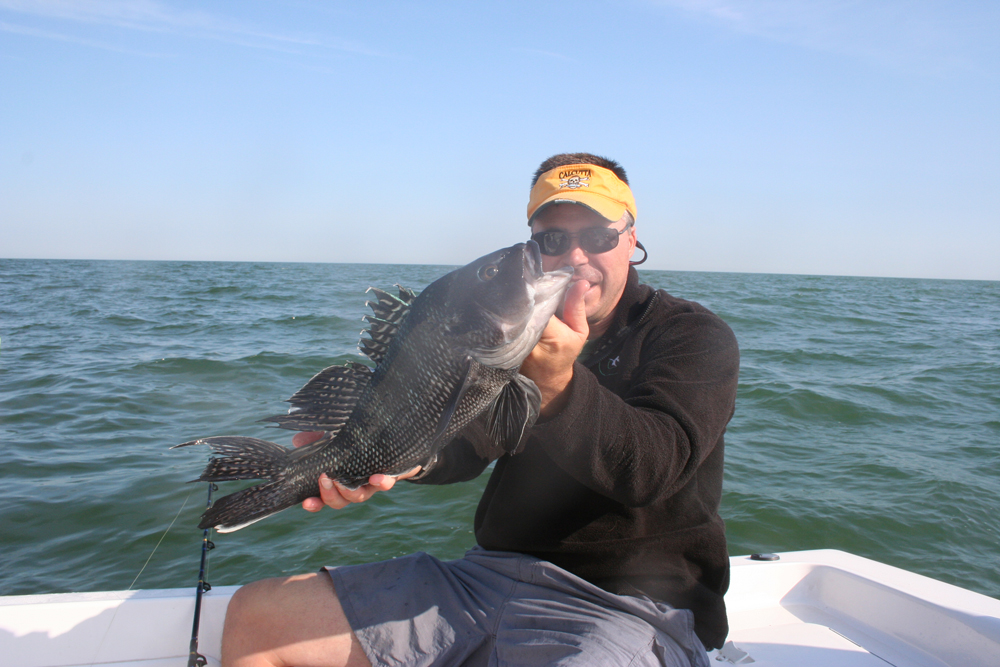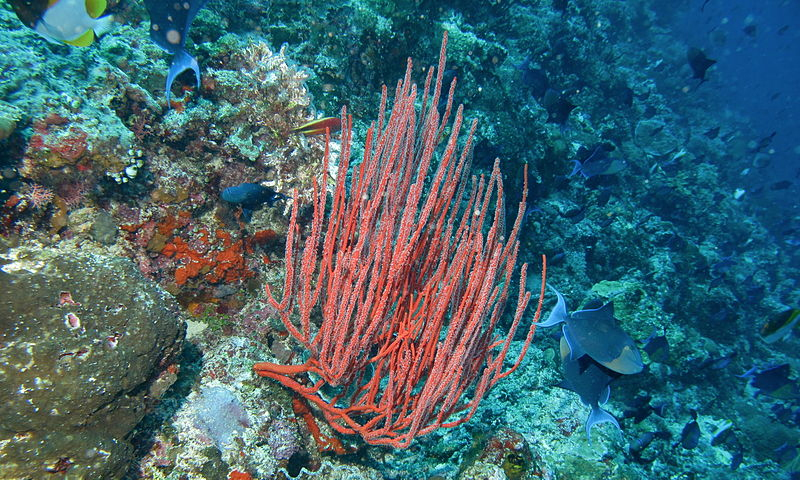At present, the Mid-Atlantic region’s many depleted fisheries are being 'rebuilt' by effort reduction and catch restriction, which amount to regulatory-enforced increases or decreases in our fishing effort. You feel effects of this strategy every time new regulations come out: larger size limits, shorter fishing seasons, and smaller bag limits. As a group, we recreational fishers either bemoan more restrictive regulation, or celebrate victory when allowed to keep more fish in the coming year. Marine regulation is fine-tuned annually, and sometimes even by emergency closure.

While habitat is certainly a focus of research, and ecosystem-recovery work goes on in our area's estuaries (such as oyster replenishment), there is no habitat consideration whatsoever in our region's oceanic marine recovery efforts. It’s as if “habitat” stopped at bay’s mouth. It doesn’t. We must learn of marine habitat’s vital role to food webs and spawning production.
Increasing habitat production is every bit as effective as reducing catch to help rebuild a fishery—perhaps more so. This is why they are knocking down dams. With catch restrictions all but exhausted, allowing salmons, shad, eels, and river herrings more useable habitat increases production. Dam removal is happening because effort reductions alone have failed. And we understand that with Bay grass restoration efforts and oyster reef restoration, increased habitat production, combined with the same fishing effort we have now, would equal a lot more fish.
But we must not stop there. Marine restoration too needs to happen in the ocean, too. Restoration that addresses everything from air pollutant’s affects on phytoplankton production and its resulting impact on menhaden density, to reef growths lost in 50 fathoms when foreign factory ships plied our seas in the 1950s, 60s, and 70s. Habitat disrupting events we allow have to be survivable, or the system breaks down.
Habitat that can be seen, especially just wearing waders, has received most of the attention to date. There’s a lot more that can be discovered, its absence known with a hard look backwards.
The Mid-Atlantic has experienced 80-some years of heavy commercial fishing. Several of these fisheries involve tons of steel pulling across or digging into the bottom. Whatever gets in the way either stops the gear, or gets crushed as the gear moves through. A lot of seafloor habitat was lost in the early industrial fishing period. And it wasn’t just our fishers; until 1976 nations from halfway around the world contributed to seafloor habitat decline in this region, as well.
At best, I believe, perhaps 15 percent of our natural seafloor habitat remains. The most robust (or lucky) has survived and is now protectable. That vast meadows of sea whip (a three-foot tall soft coral still commonly found on remnant hard bottom and artificial reefs), and low hard coral reefs once flourished is, I think, provable. It’s plain as day in fishing’s history. Fisheries food web and spawning production was lost as these areas were destroyed decades ago, which is why catch restriction has ceased to improve fish populations. If the habitat were still whole, catch restrictions would truly be enough to restore fantastic fish populations.
No amount of catch restriction restoration strategy can restore populations of a century ago without the corresponding habitat. We must find what marine habitats exist, what has been lost, and how to restore that lost habitat production.

Eighty years ago a man could make a living commercial fishing with a boat launched from the surf. Imagine having to leave bluefish because marlin were wrecking your trolling gear. It happened—from a boat with a one cylinder engine, just a few miles off the coast of Maryland.
Blue water restoration is inextricably tied to oyster restoration. As oysters decreased and finally crashed, Mid-Atlantic ocean water turned from blue to green. Today that effect sometimes carries to beyond canyons’ edges. For billfish in nearshore waters to happen again we must replicate, even increase, the original bio-filter—the oyster habitat—and today there's no way to get there except by artificial reef.
While NOAA tells us ‘sea bass are at 240-percent their rebuilding level,’ the fact remains there were more sea bass caught commercially from 1950 to 1961 than in all the decades since combined. We owe that staggering loss of fish population not just to over-harvest, but to habitat loss – seafloor habitat loss. Naturally occurring cobble fields, rocks, sandstone slabs, and hard clays that have been towed across with heavy gear contribute very little to production after they are scraped clean of growth. Either broken, moved, or buried, some substrates have been lost entirely. Until remaining hard bottoms have been left alone and corals have become reestablished, their value as habitat remains quite low. It is the complexity—the hiding places—offered by mature growth on these substrates that allow significant improvement in spawning success. When juvenile fish avoid predation and are well fed, survival rates increase. Soon after, spawning production increases as more fish join spawning populations.
At present there is no official plan for using artificial reef to rebuild fisheries. It's happening though—a fortunate accident because recreational fishers see it working. Reef building should be pursued with more vigor, and science developed that can put numbers to the idea of improved habitat spawning and food-web/forage production.
Perhaps the least-understood reason why artificial reefs work can also be understood thanks to the example of the salmon. Every school kid knows the salmons return to their natal stream. Tagging studies have shown that this is a natal bond; it's where they spent their juvenile period that imprints and becomes ‘home.’ When it is time to spawn, they return home. This behavior is hardly unique. Many species of fish exhibit natal spawning-site fidelity. Unlike salmon that die after they spawn, most species return year after year. Sea turtles, many species of birds, several types of shark, sturgeon, sea trout, and sea bass all return to their natal area to spawn. Some species, such as tautog, may have never left in the first place.
Management that controls effort, that controls our catch, is inescapably important. But it is only one factor. By restoring and creating new habitat we put that catch restriction to work over a vastly more powerful fisheries production engine.
More habitat equals more fish.
Unfortunately, this is not “the science.” The fact of habitat production remains to be proven, where seafloor is concerned. In fact, the existence of any temperate reef ecology on the continental shelf of the Mid-Atlantic remains undiscovered. I offer my experience from nearly four decades of fishing to show what we might be doing to better our fisheries. Believe this: in coming decades artificial reef will be factored into management, as will areas of natural substrate. Habitat footprint, the total area of habitat, will play a role in ecosystems management. The production of these areas will eventually be recognized.
Until then, many fishermen will enjoy what fishing the government allows, while managers worry themselves over how to reduce catch further still. Until catch-restriction becomes of secondary importance to habitat discovery and restoration our seasons will continue to shrink, our size limits get longer, and our bag limits smaller.
Green waters turned blue and filled with fabulous fish populations cannot come from catch regulation alone—it will be far more difficult than that.
-By Capt. Monty Hawkins
Capt. Monty Hawkins runs the Morning Star, and is a well-respected authority on reefs and bottom fishing off the DelMarVa Peninsula. Capt. Hawkins is a driving force behind the Ocean City Reef Foundation, a 501(c)(3) organization which has been building and enhancing reefs off the coast since 1997.